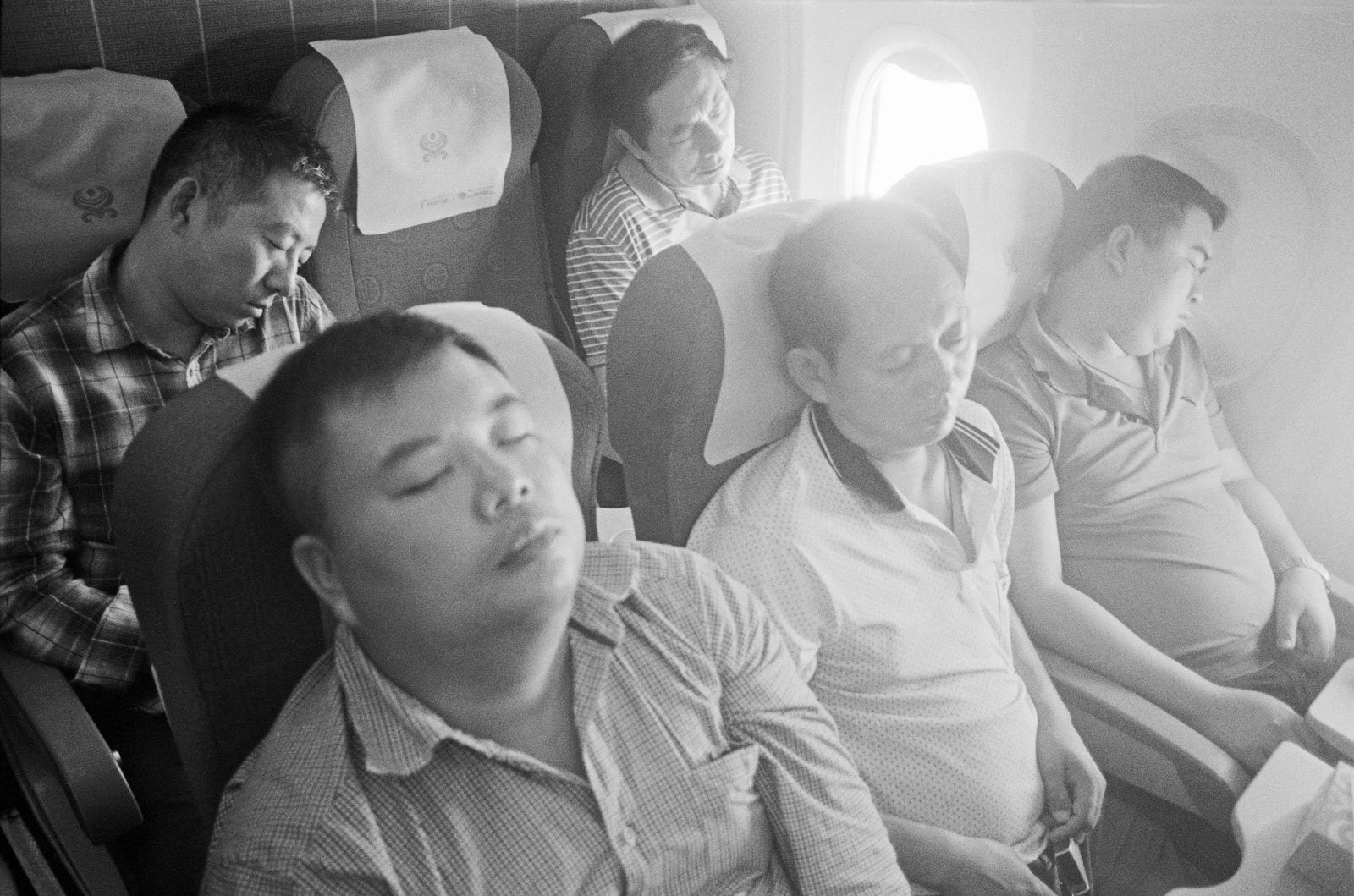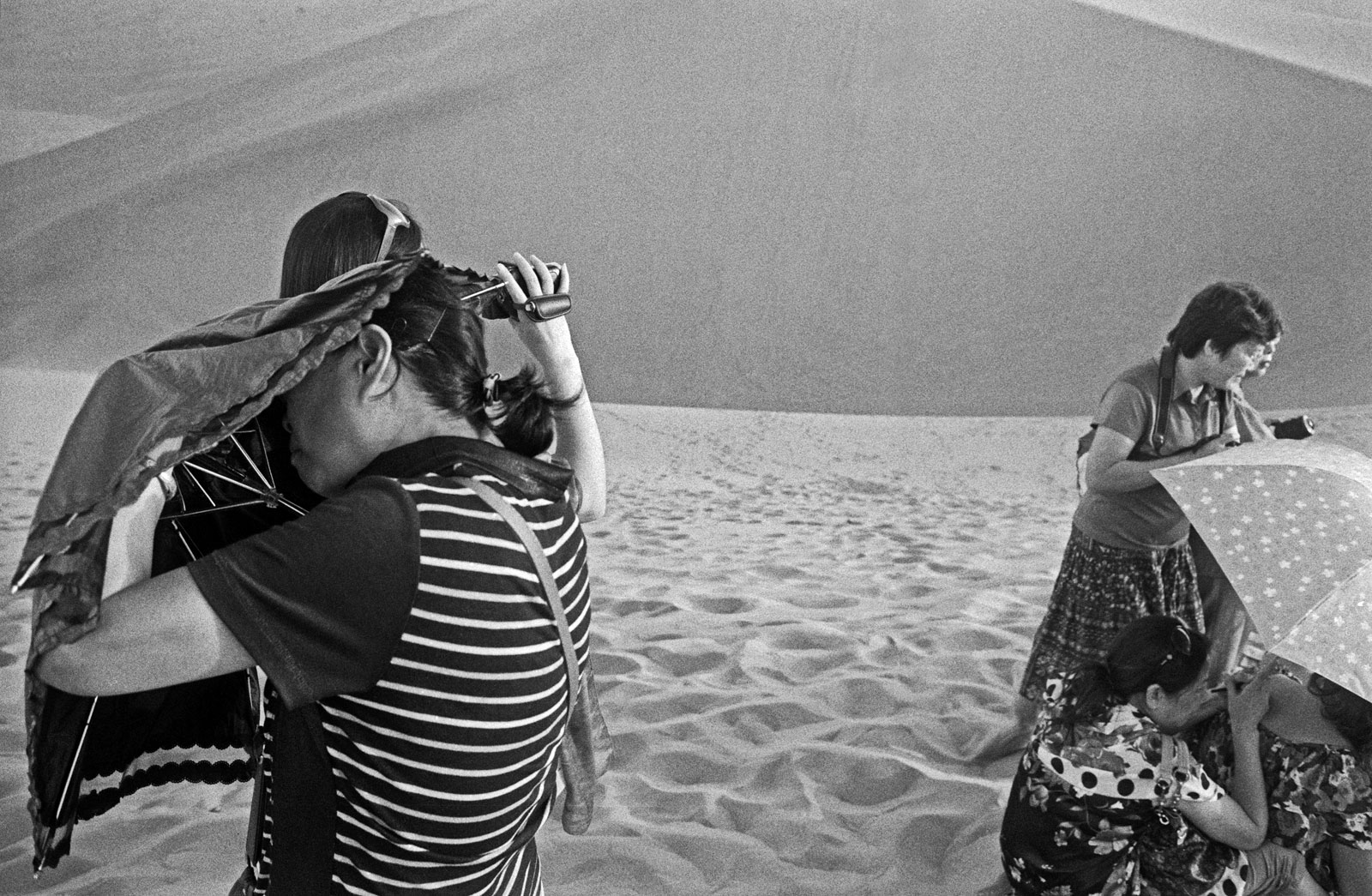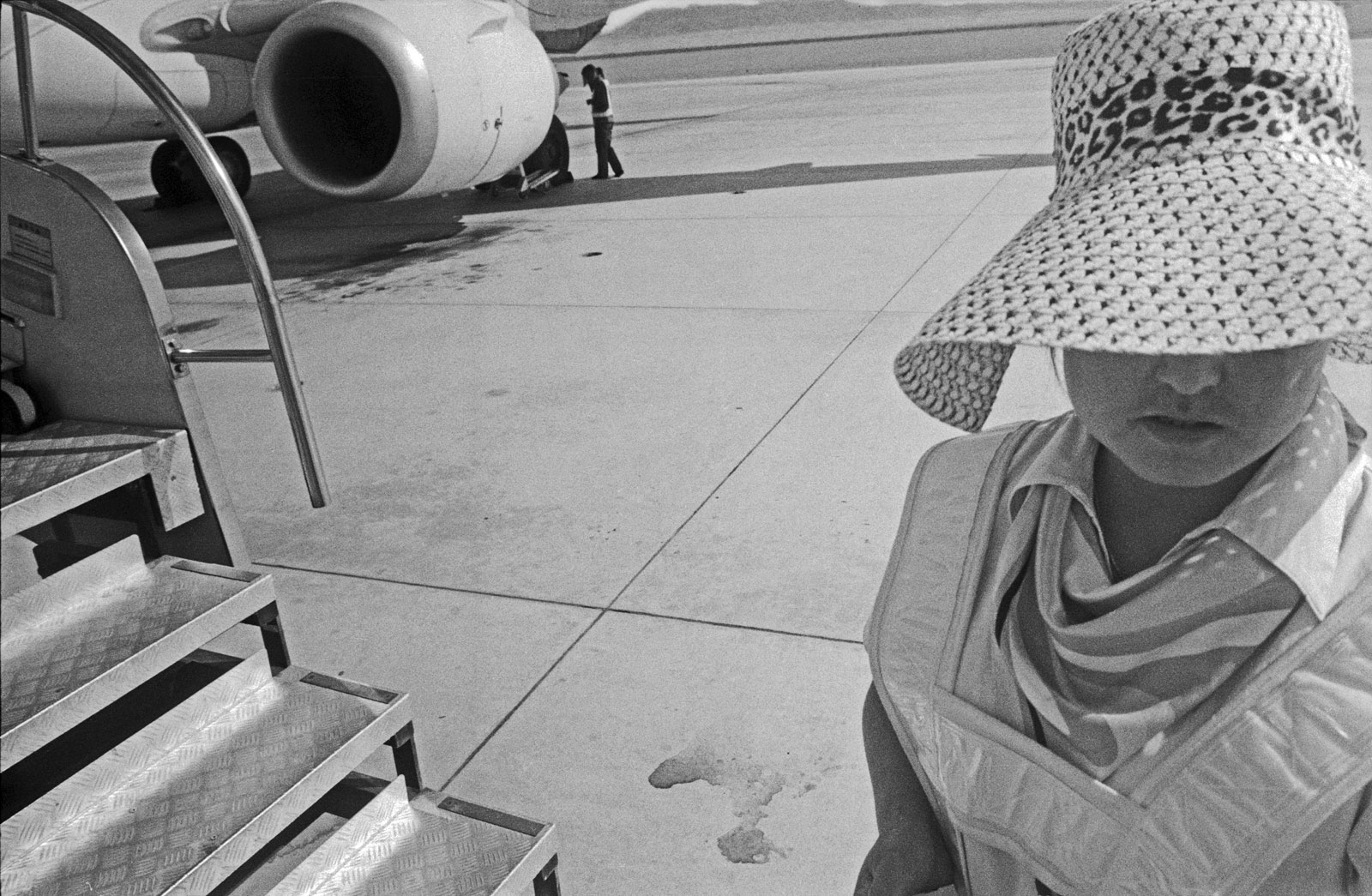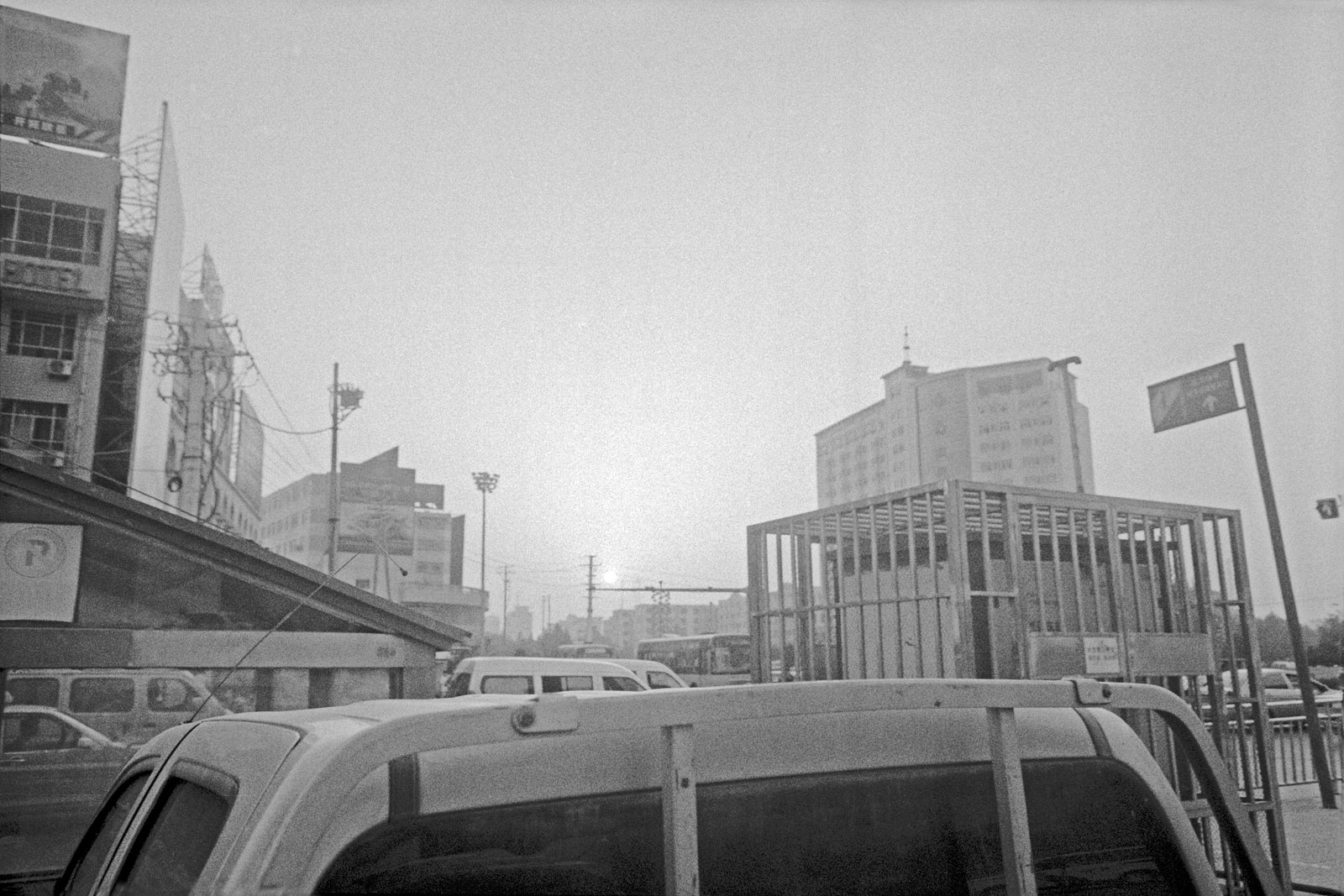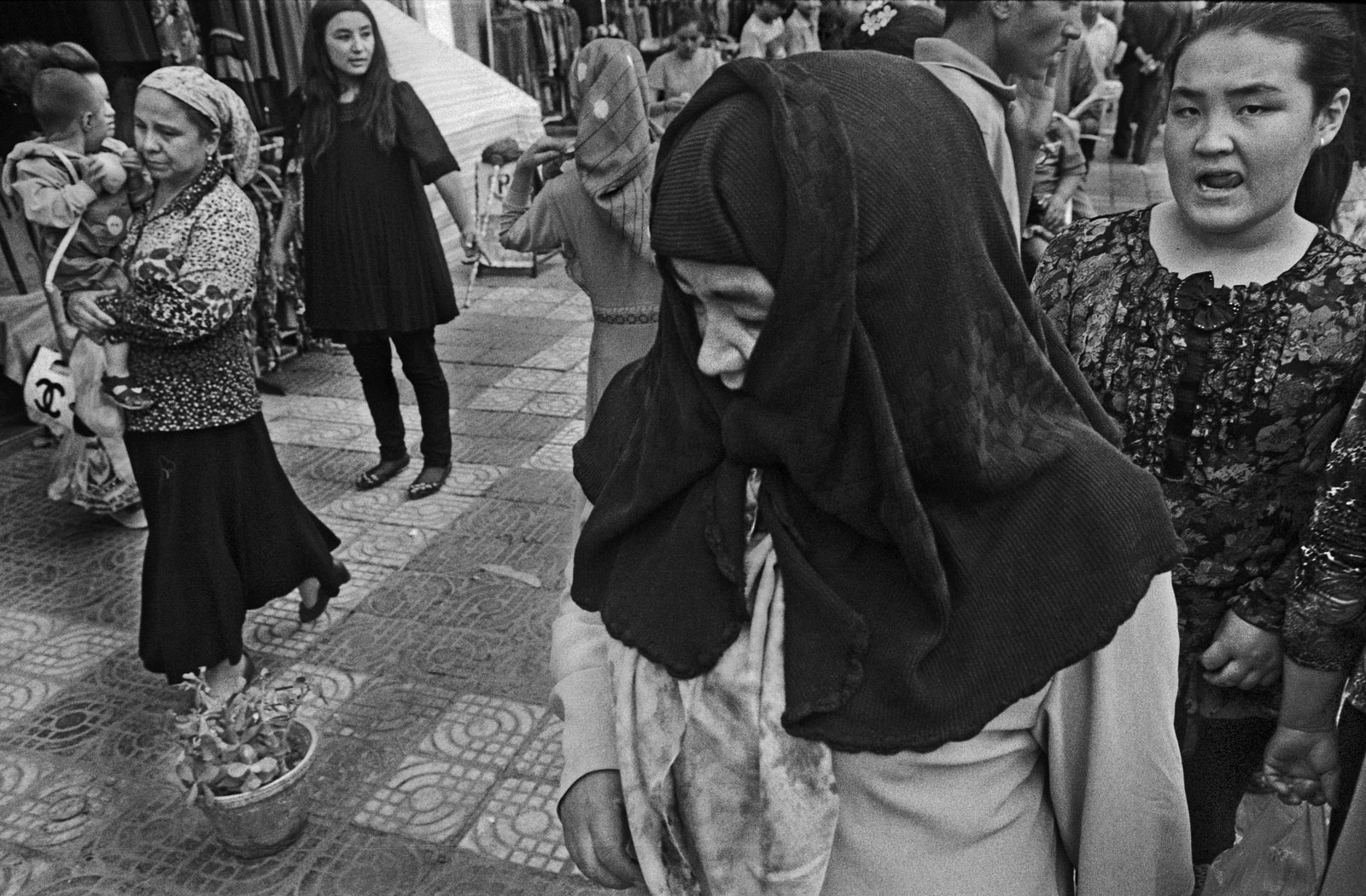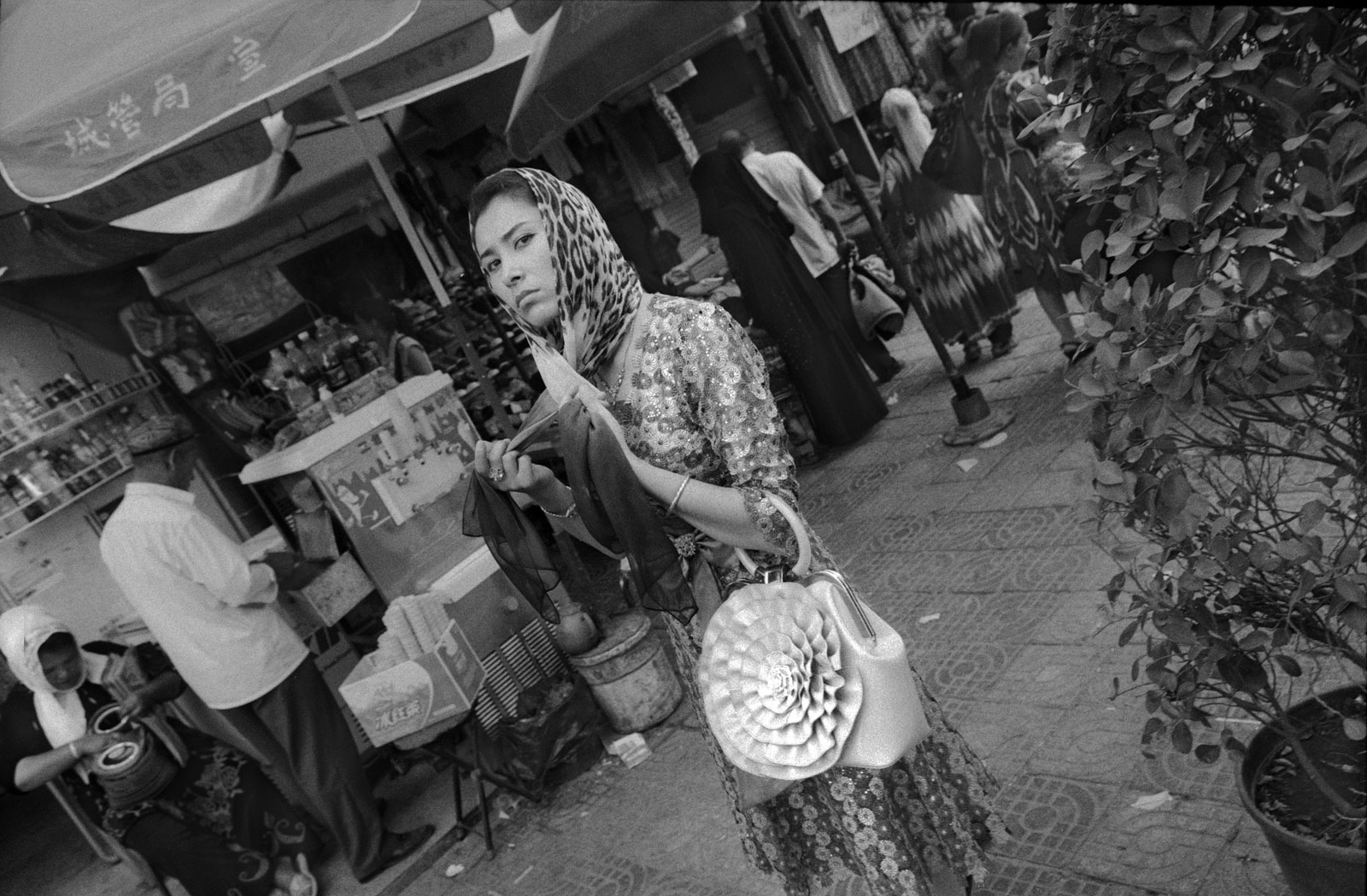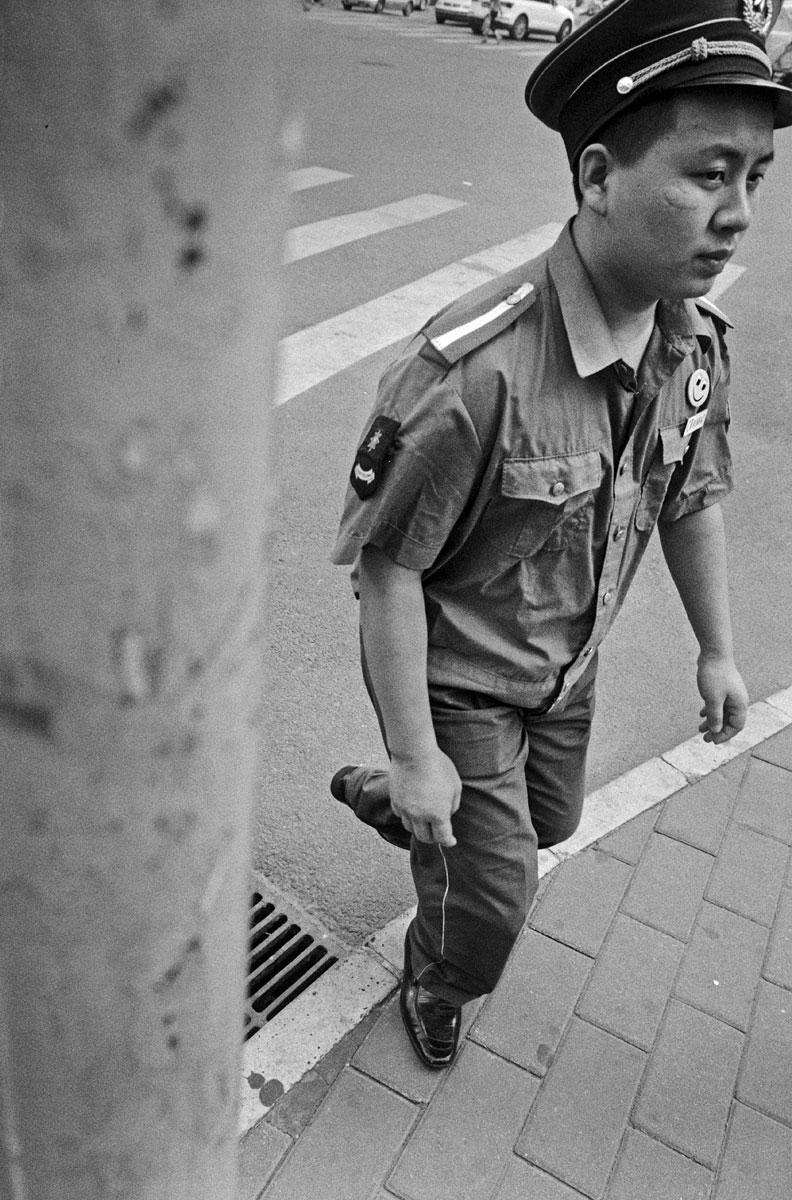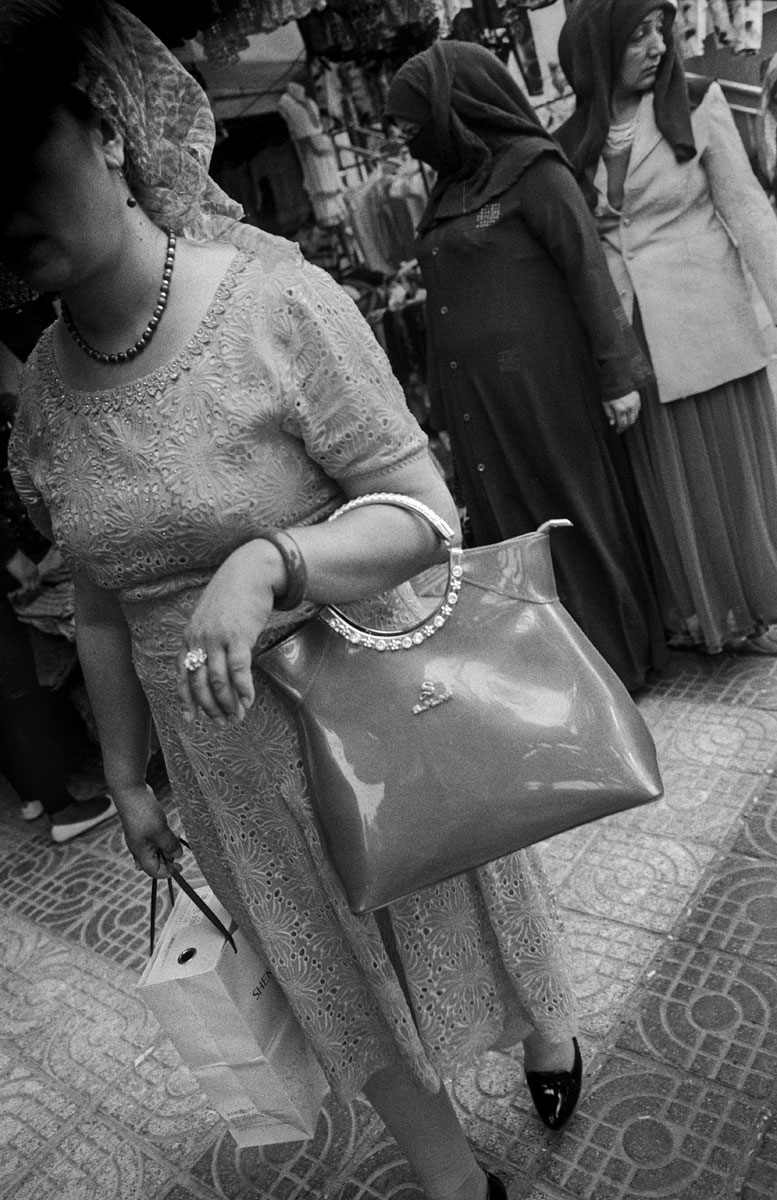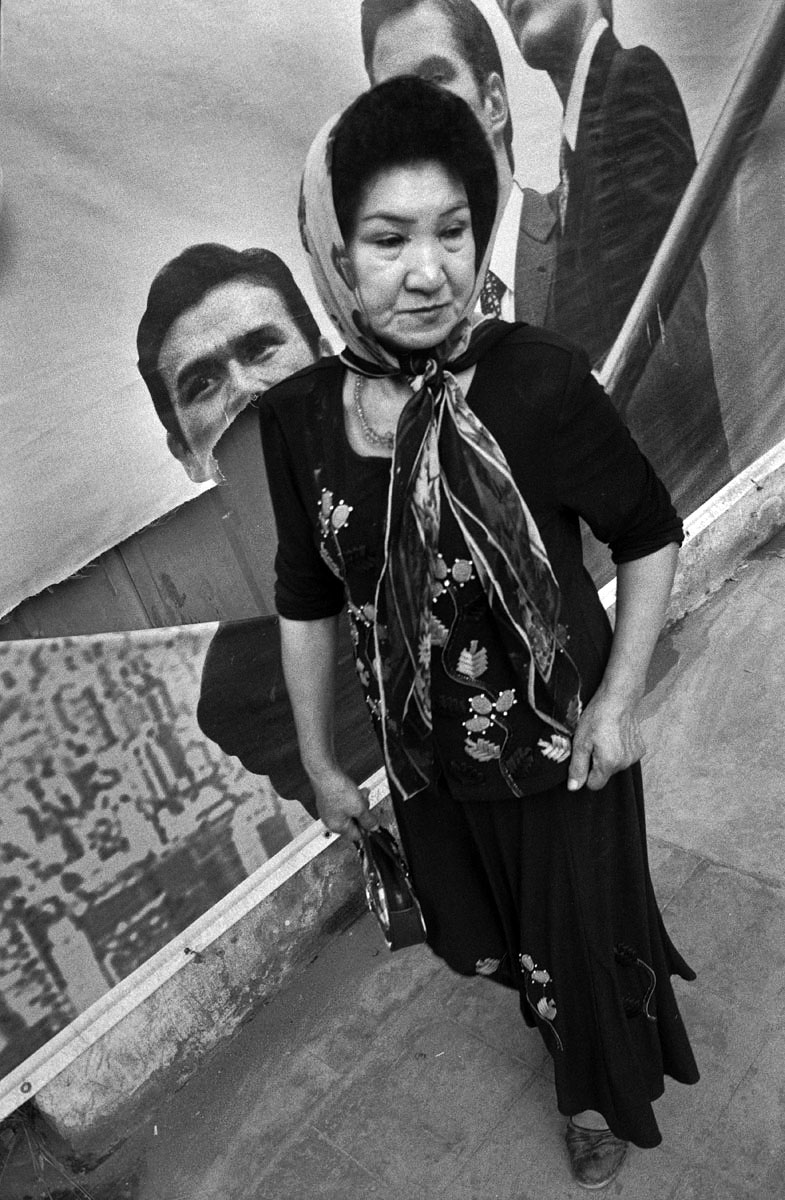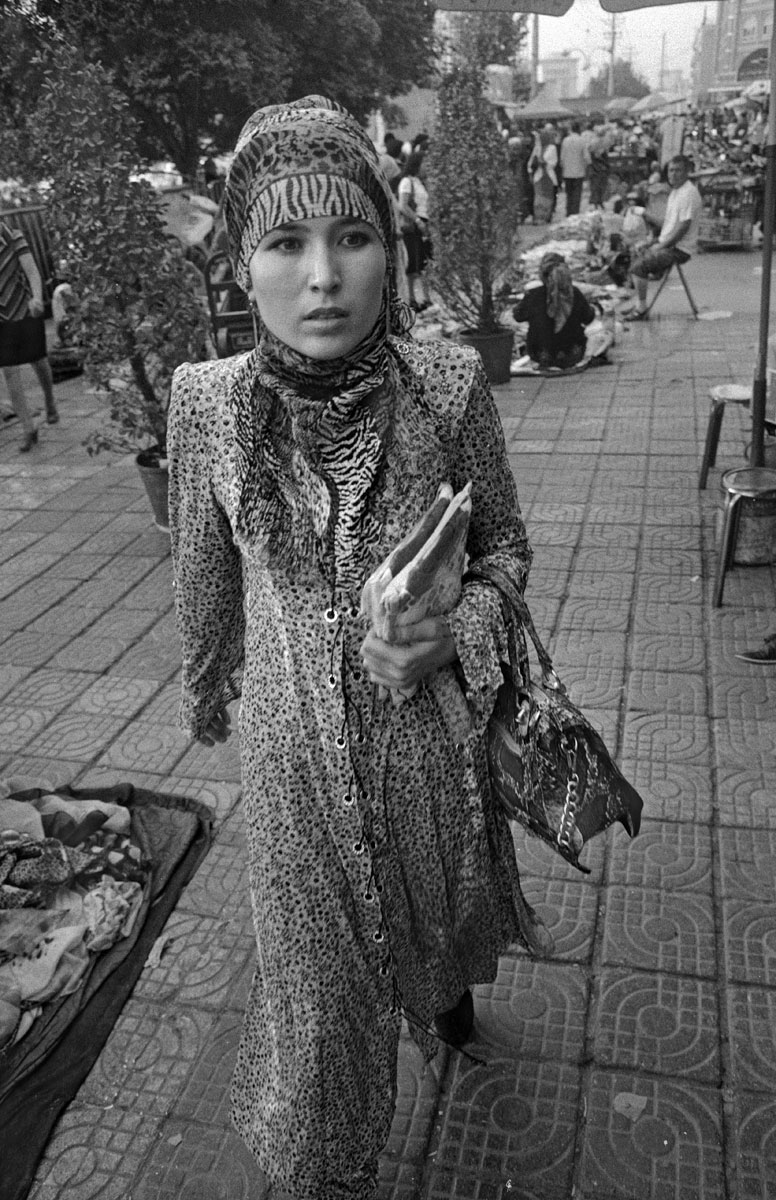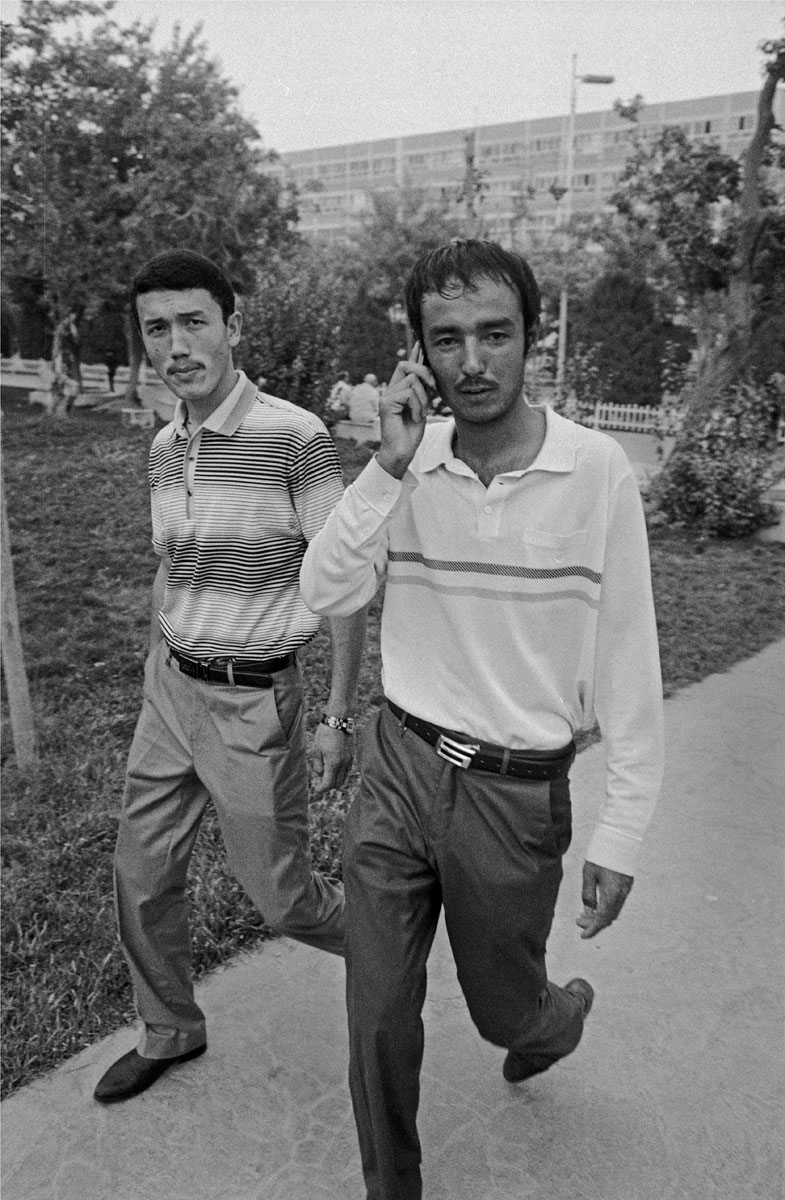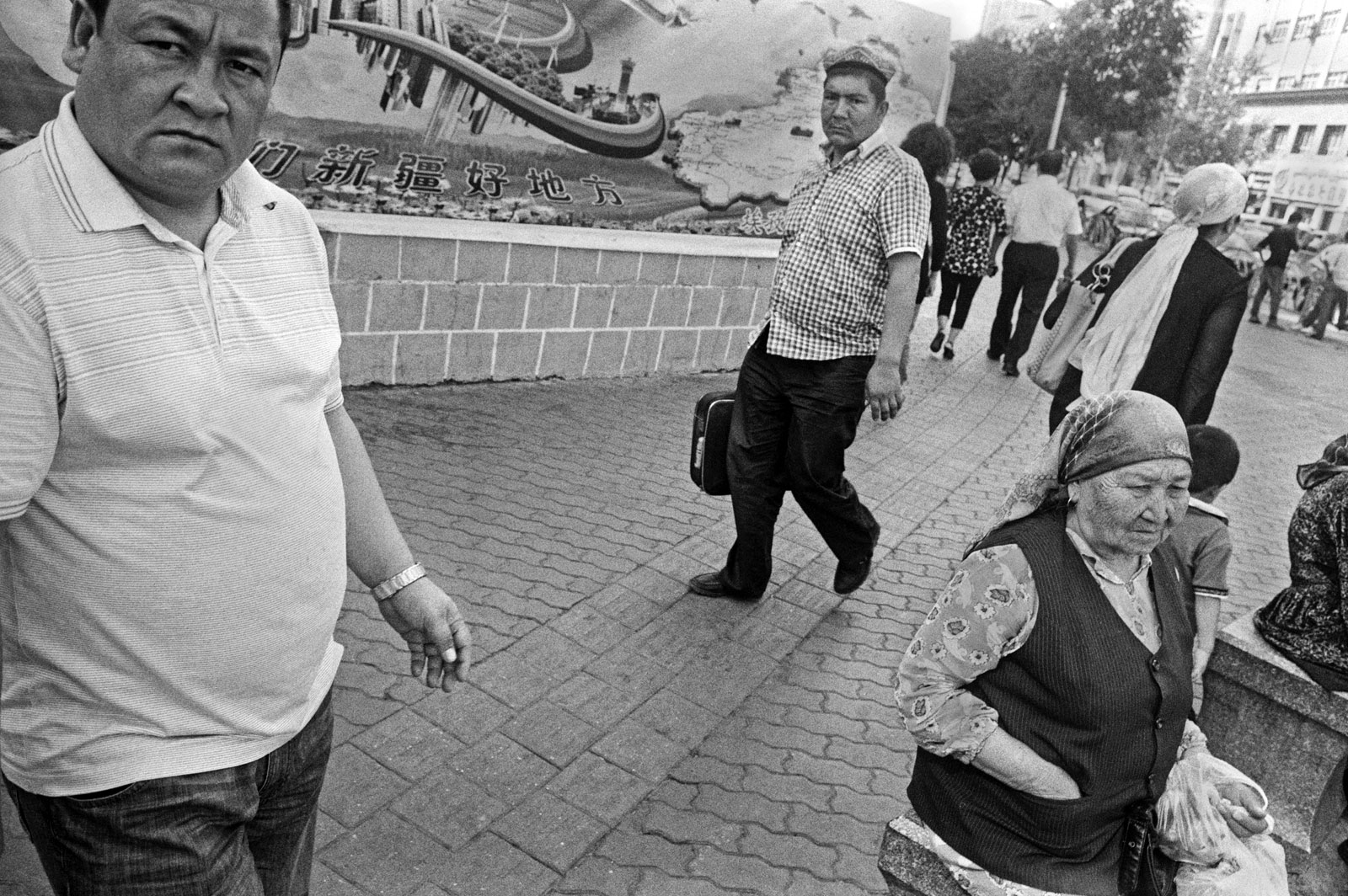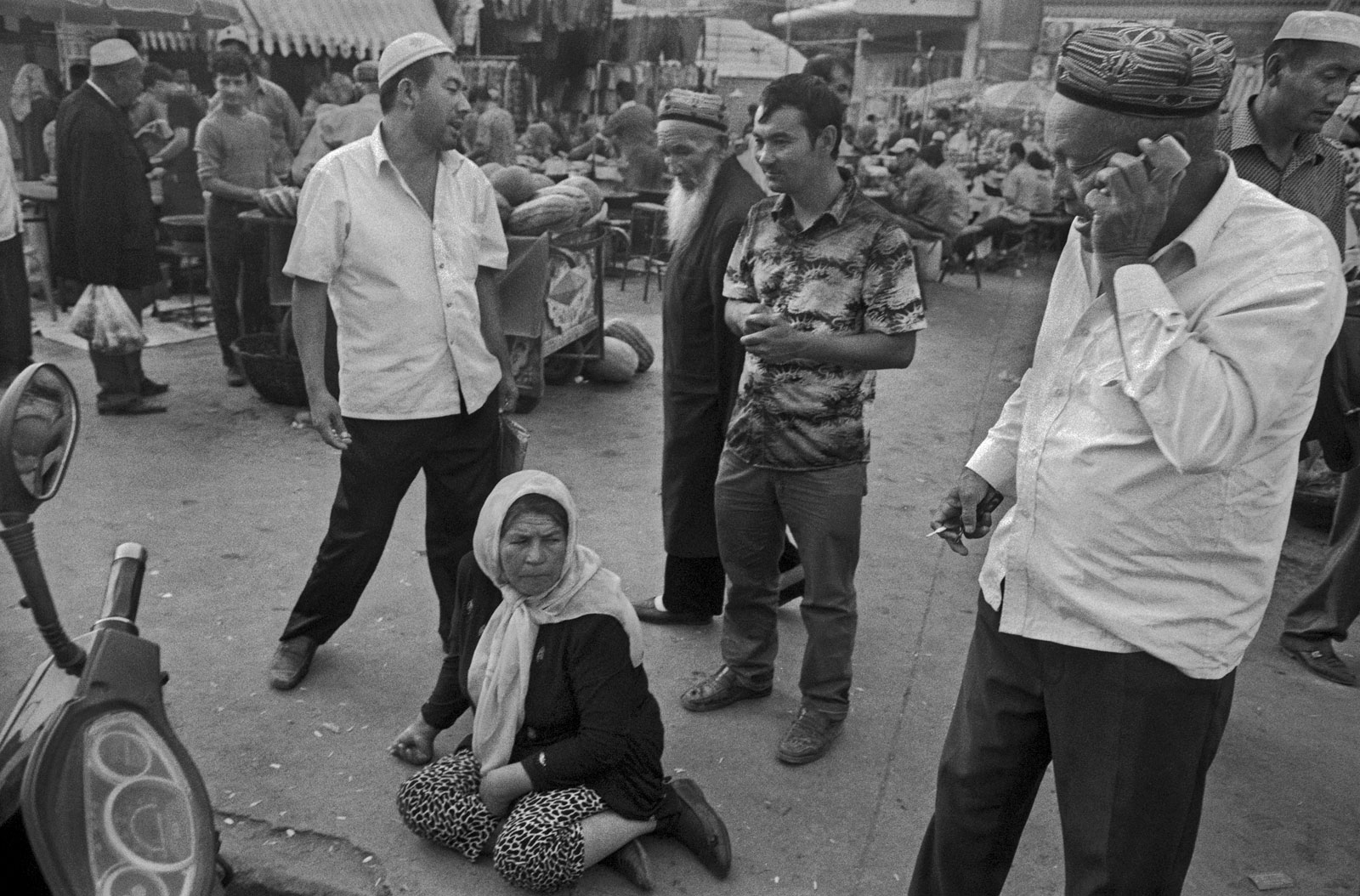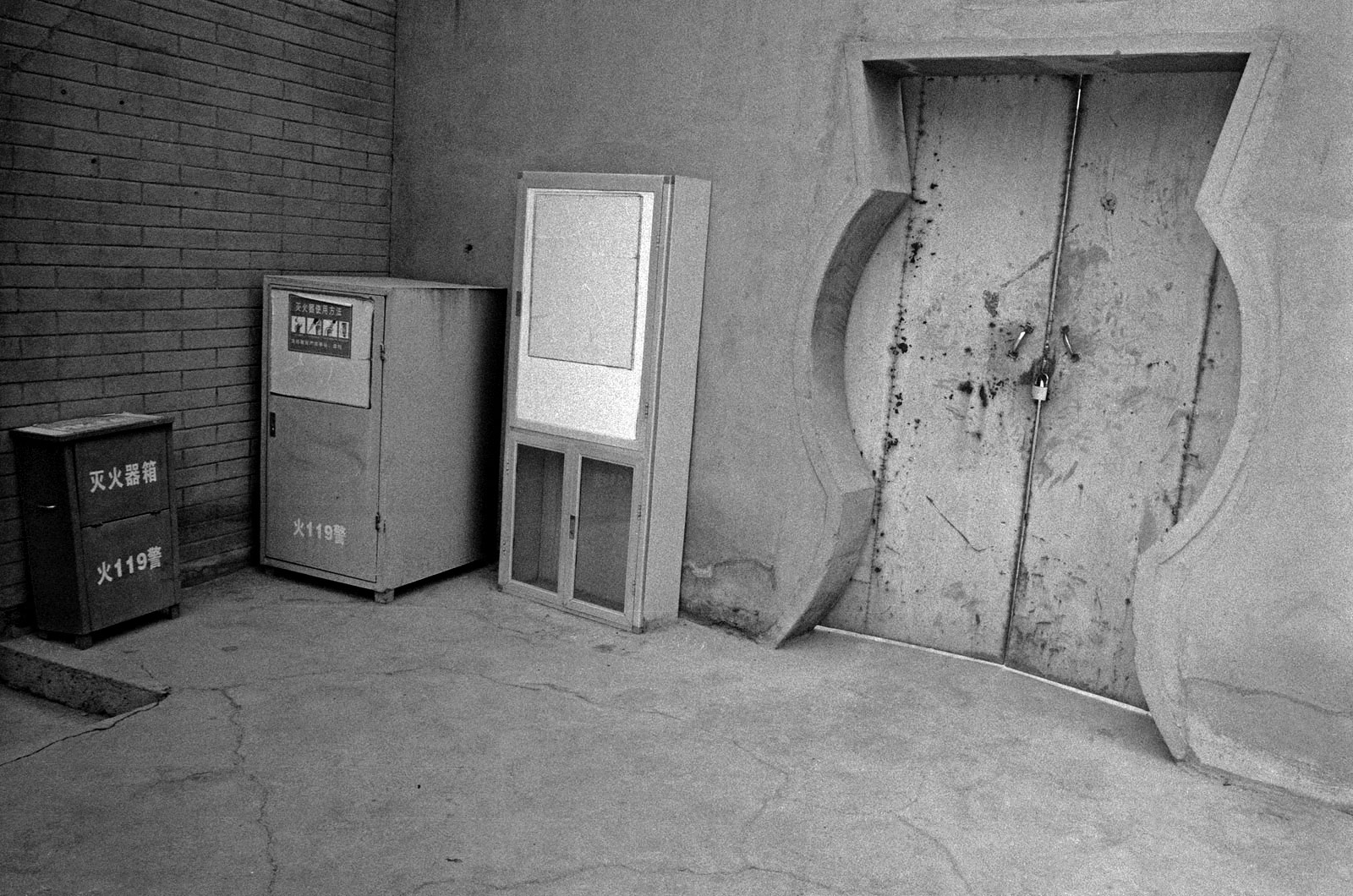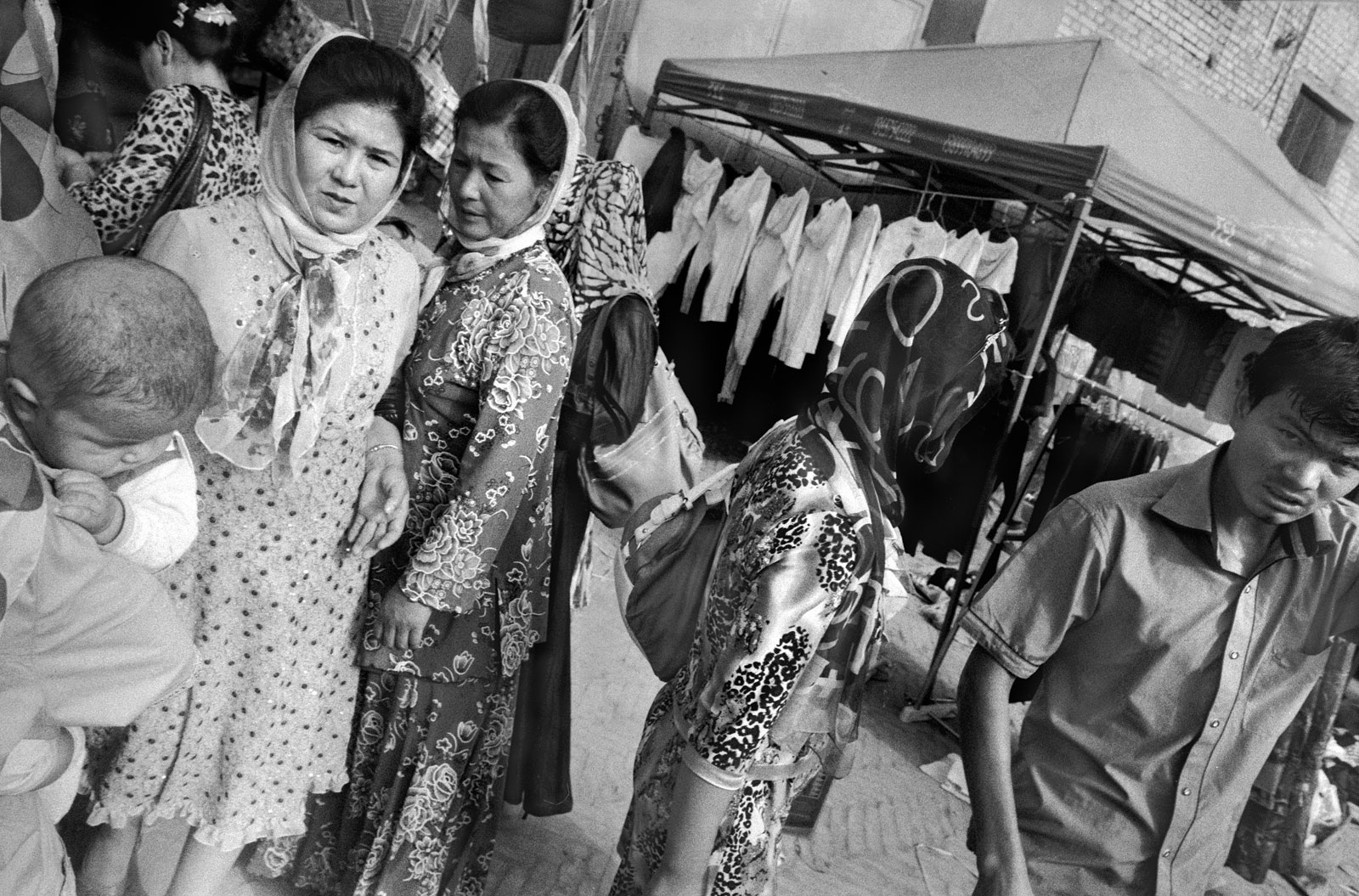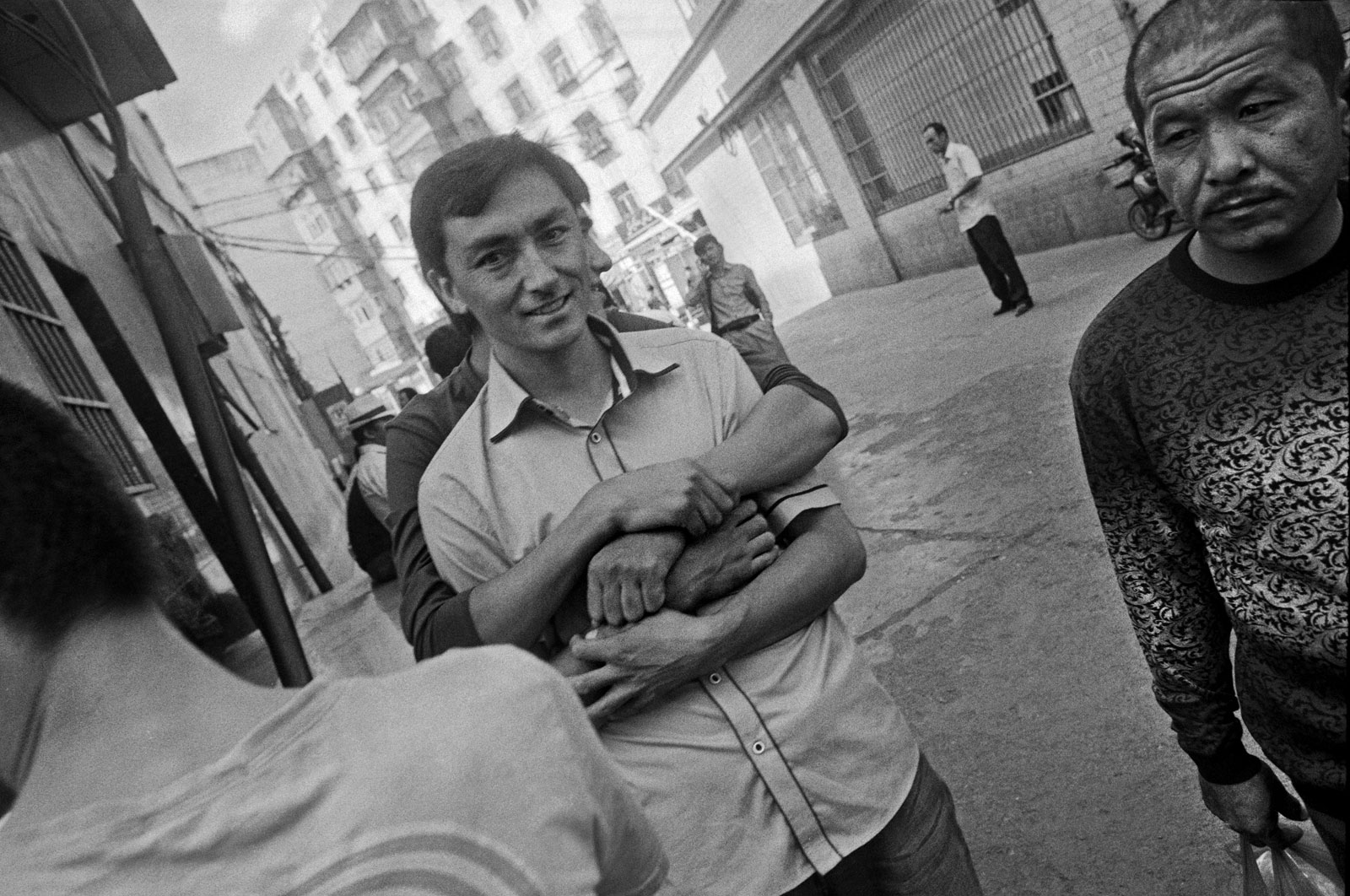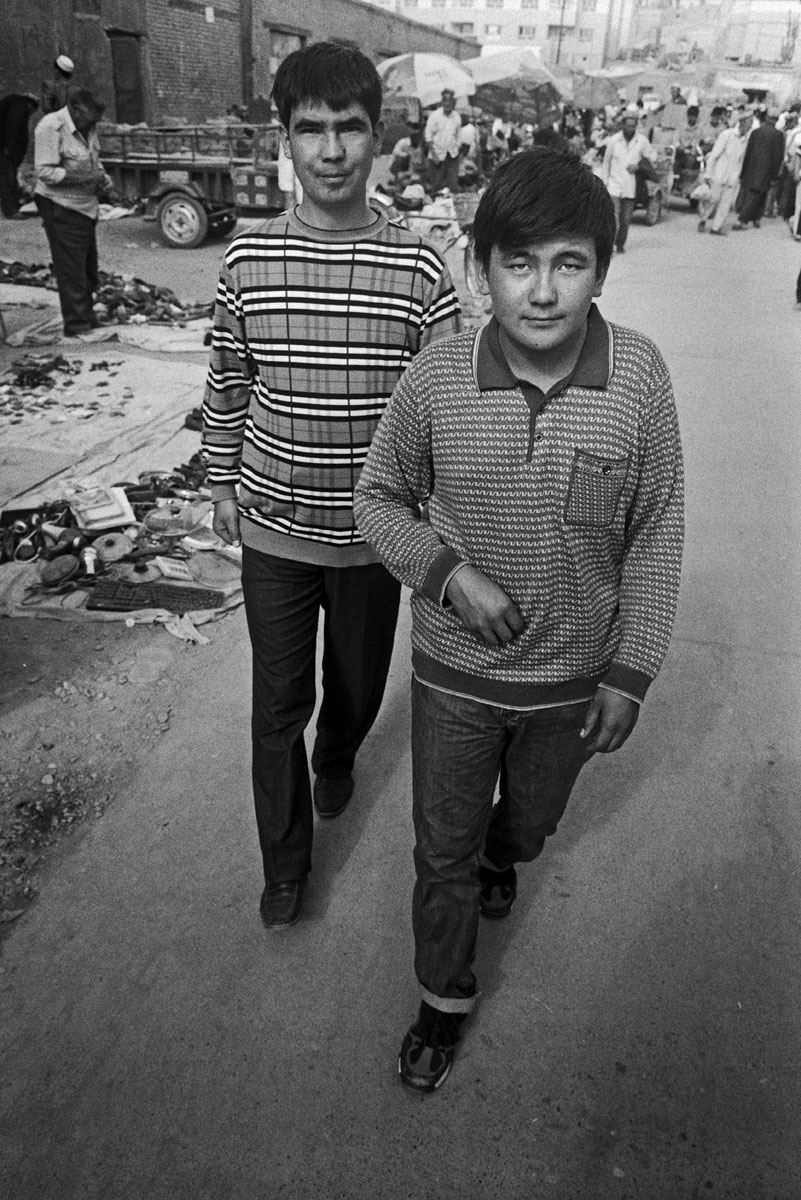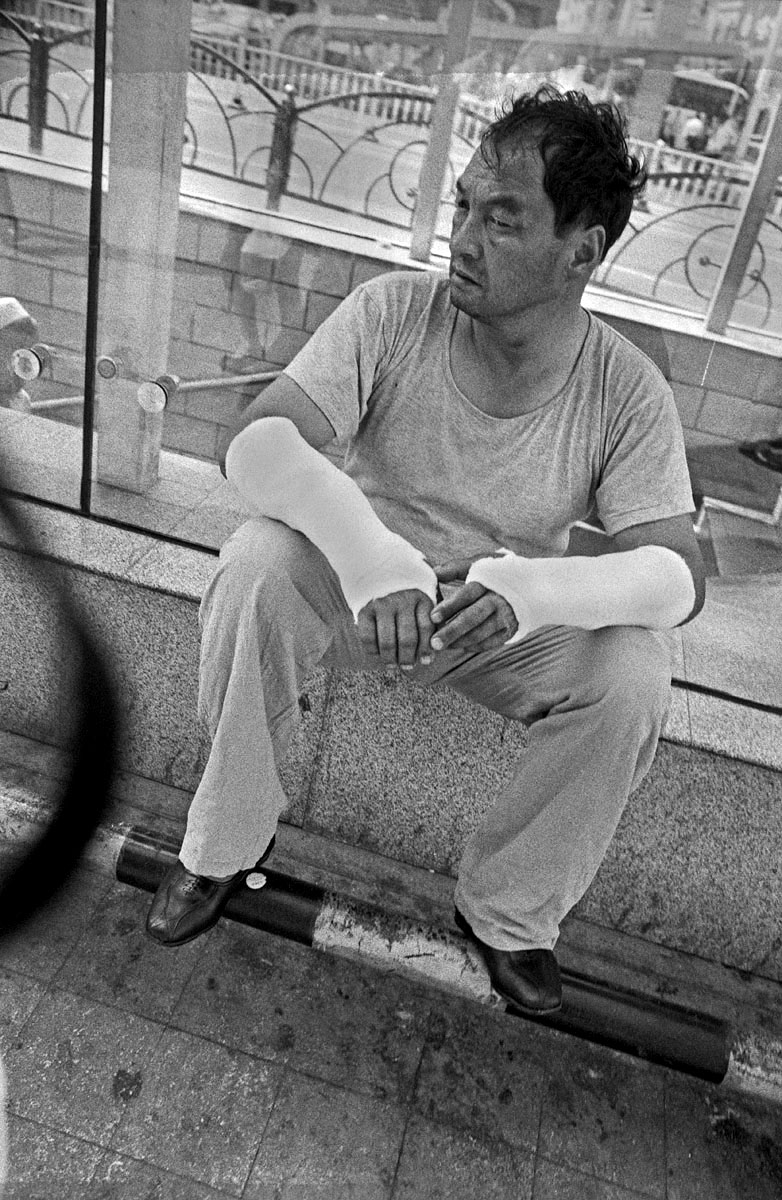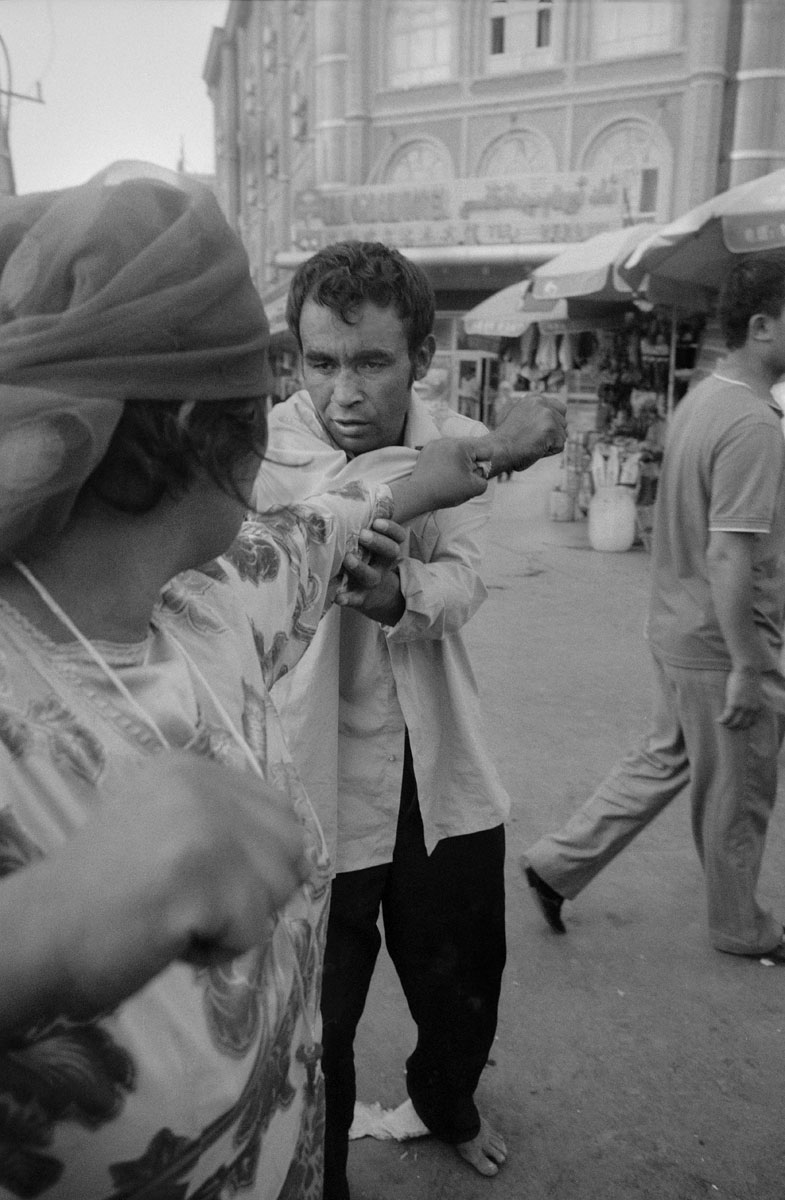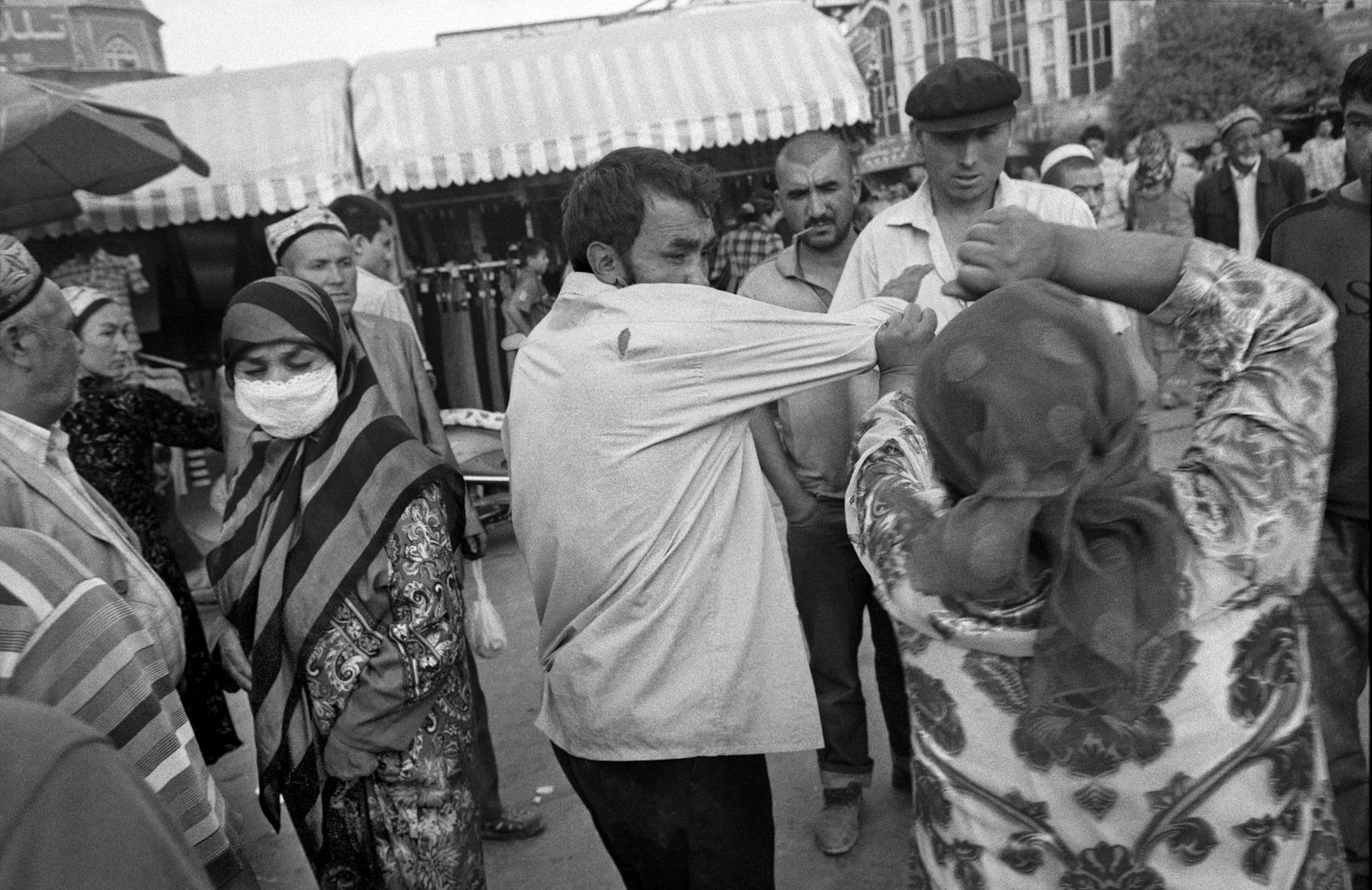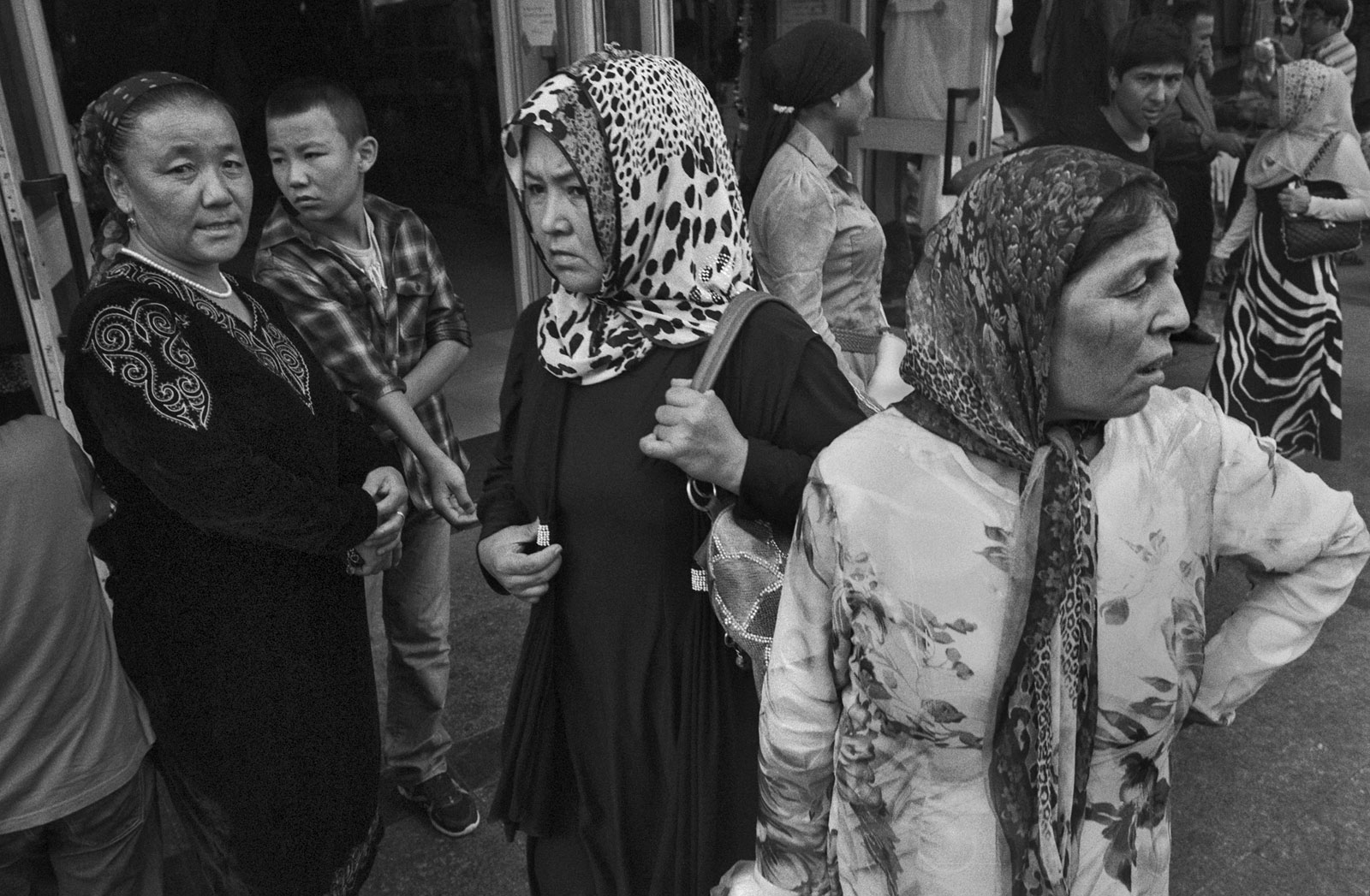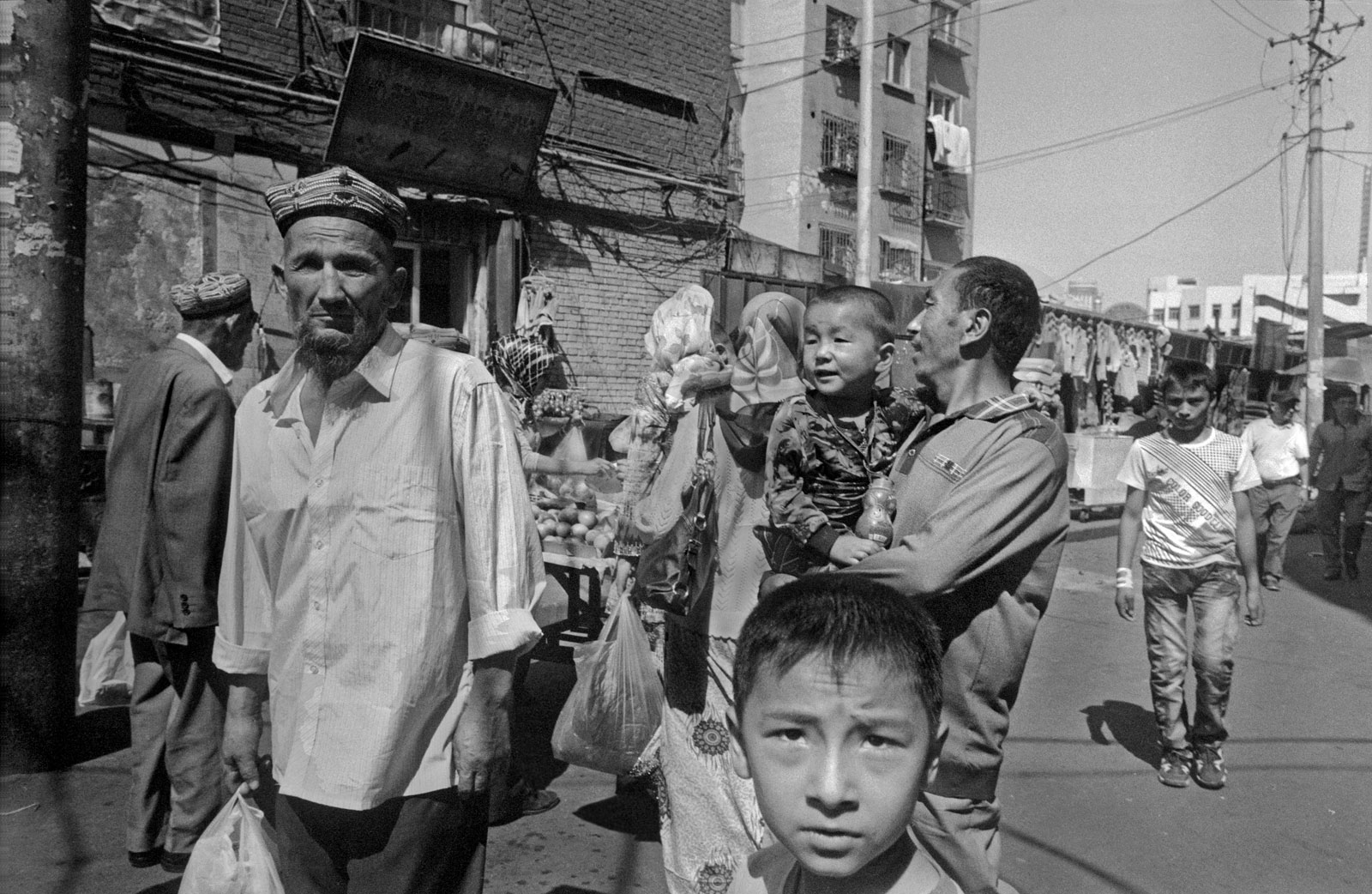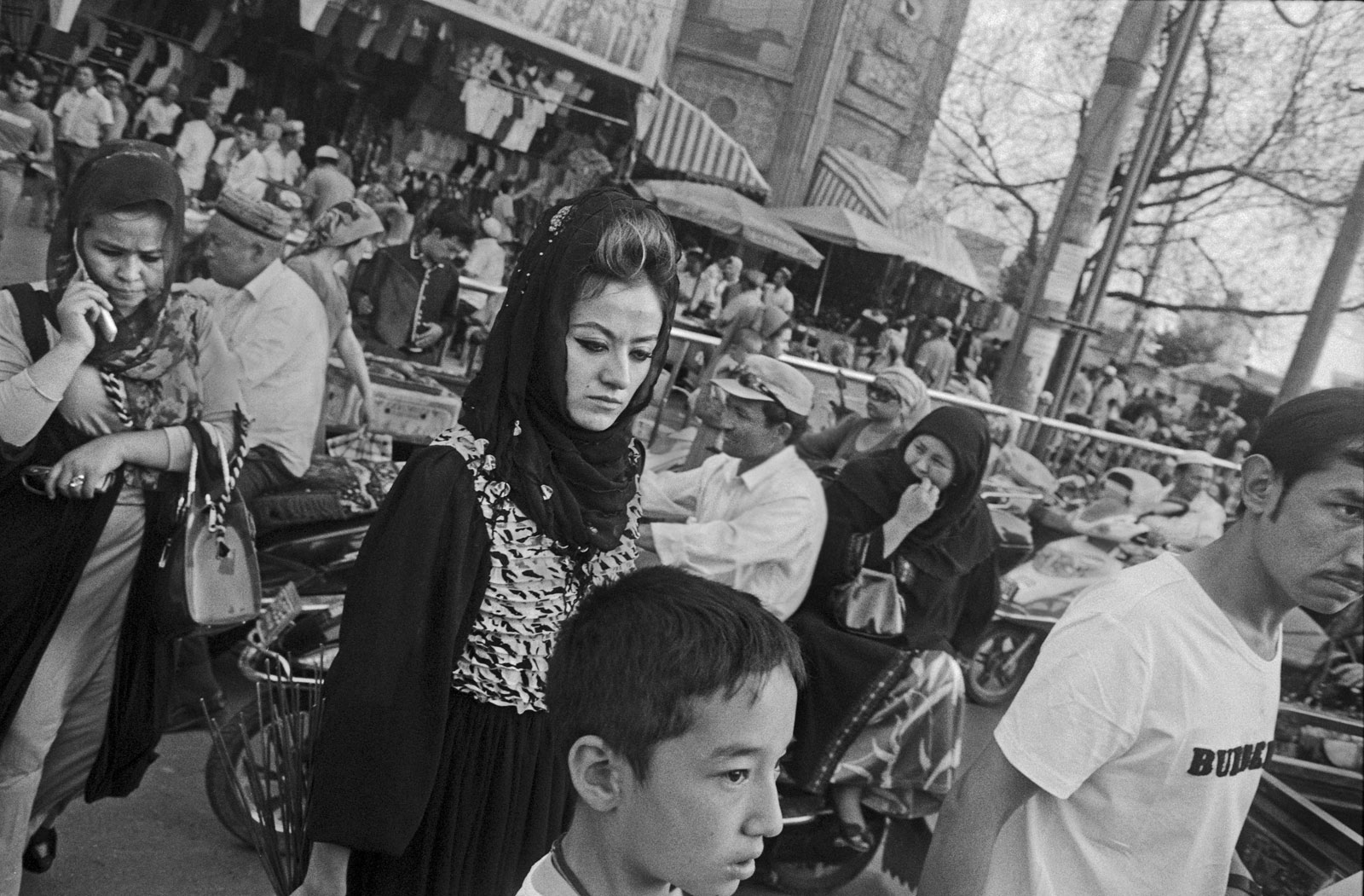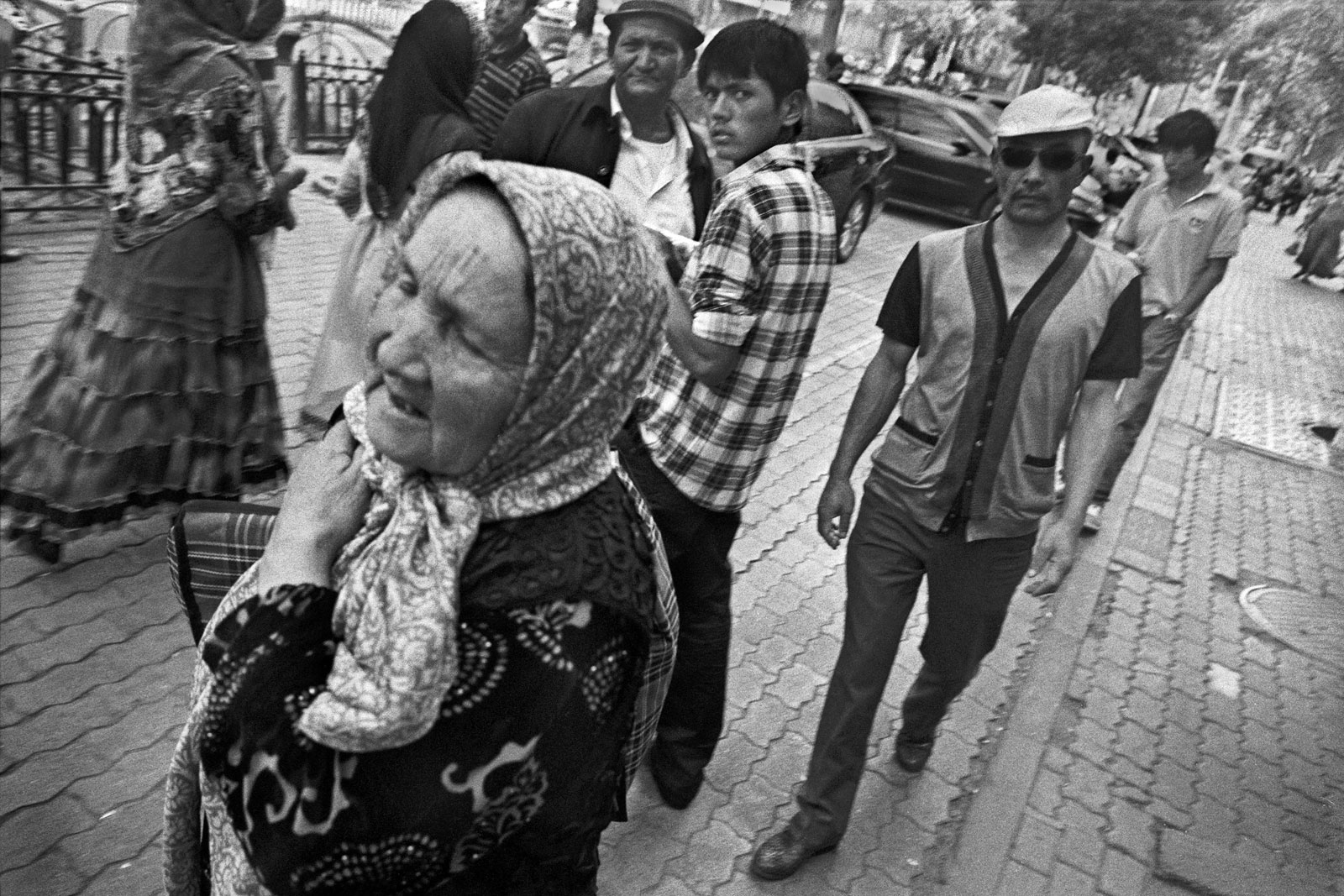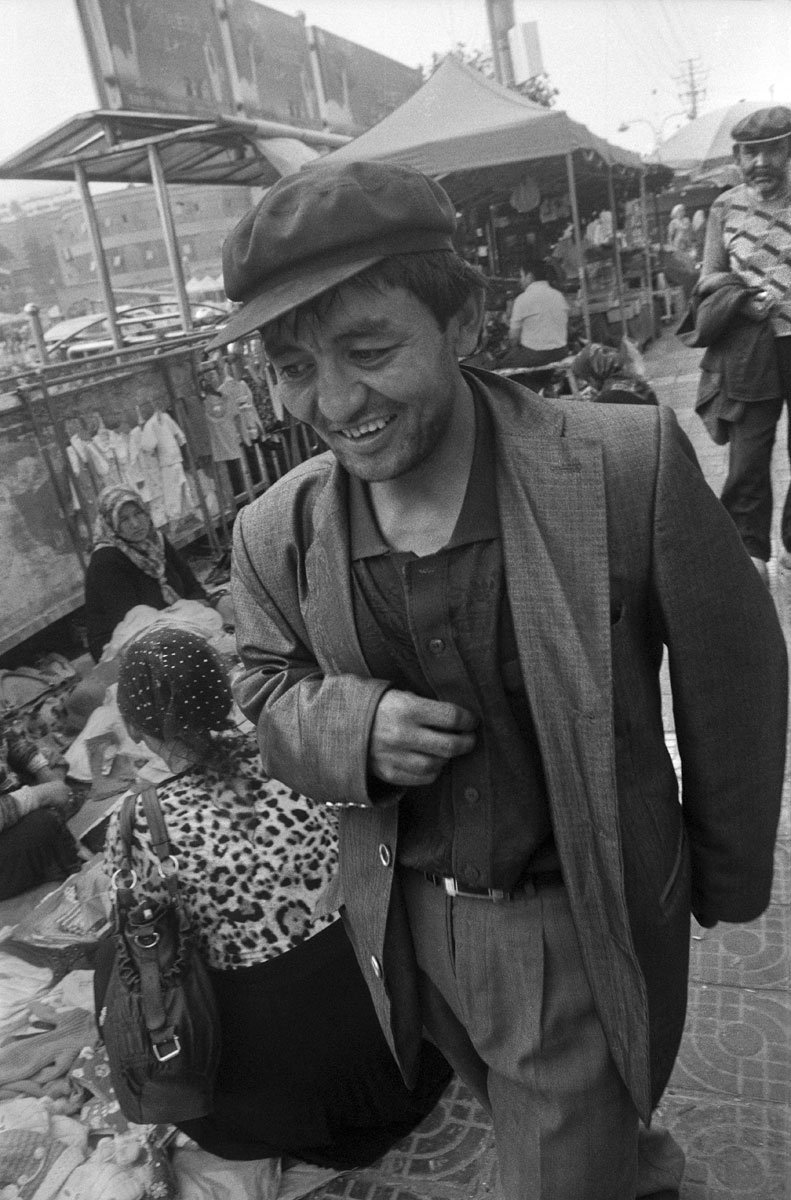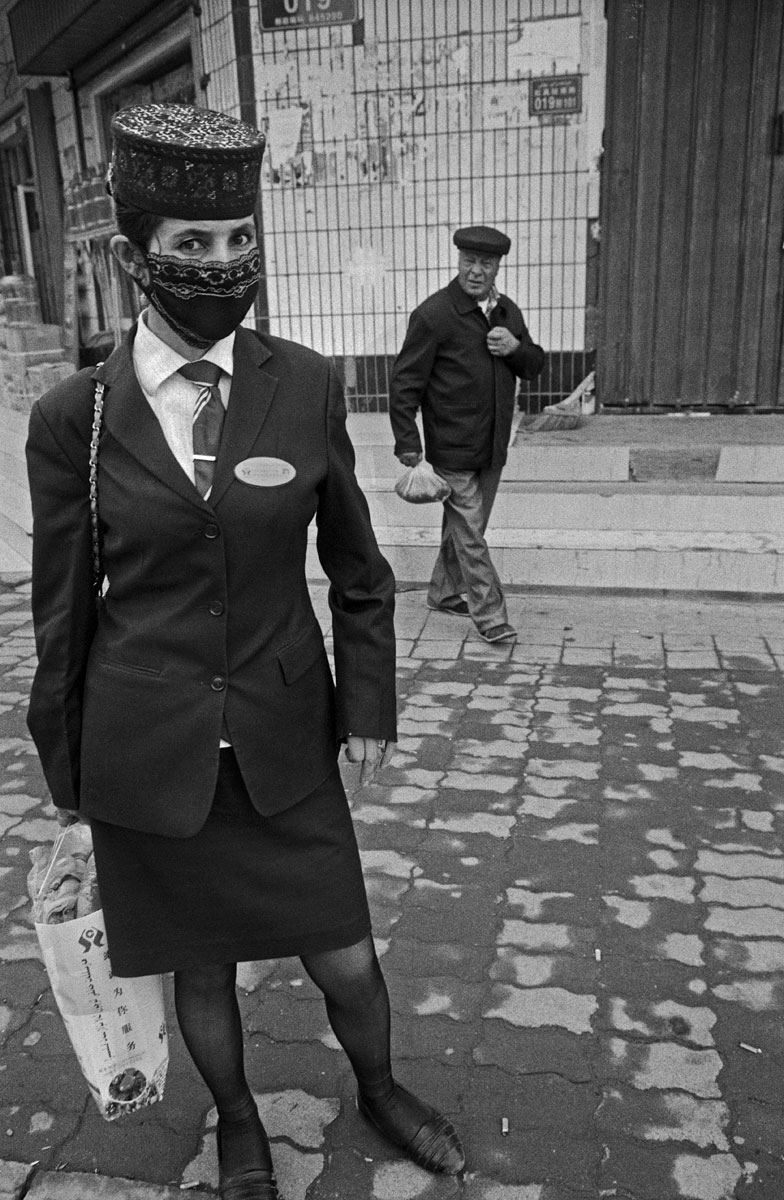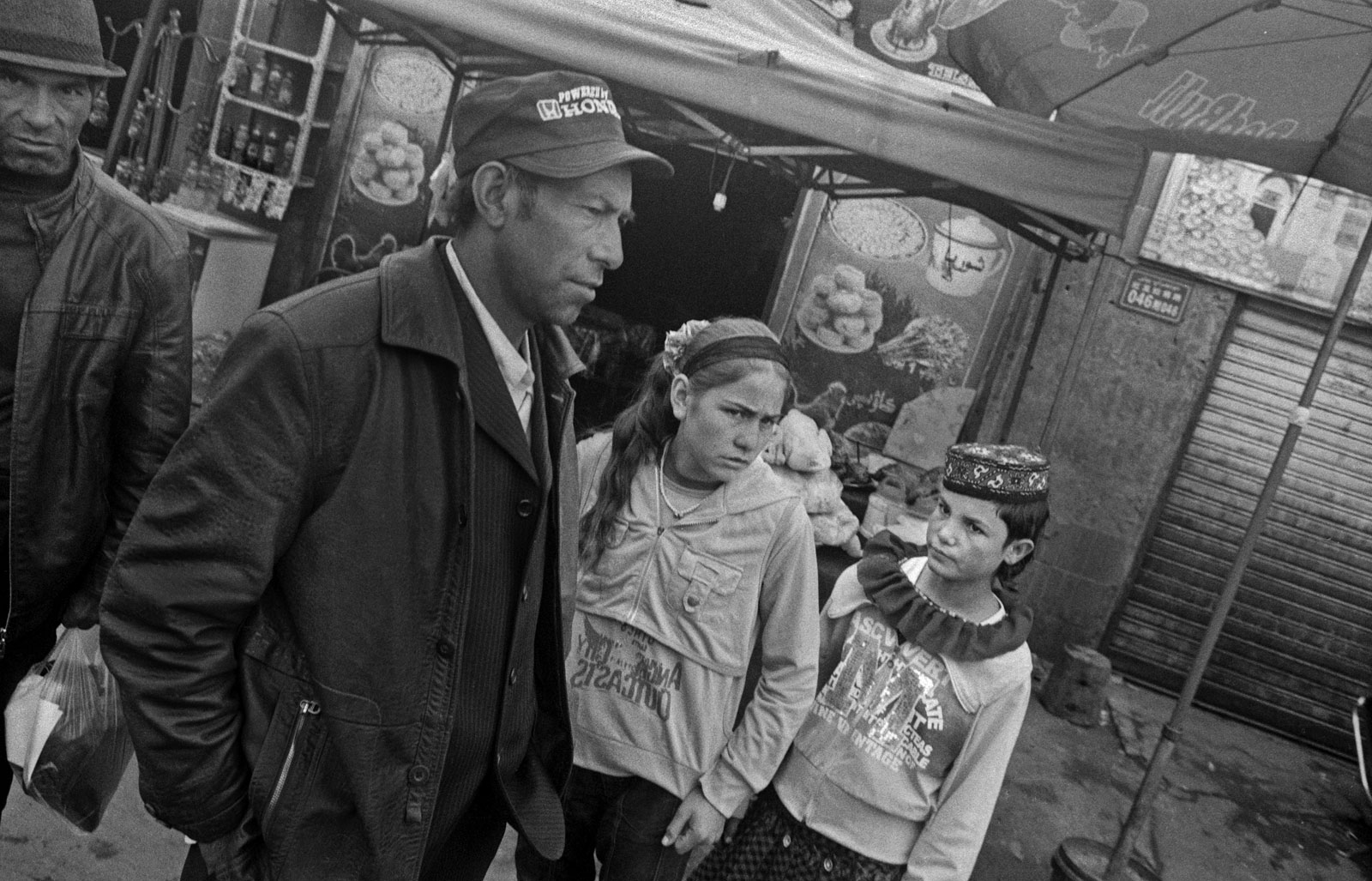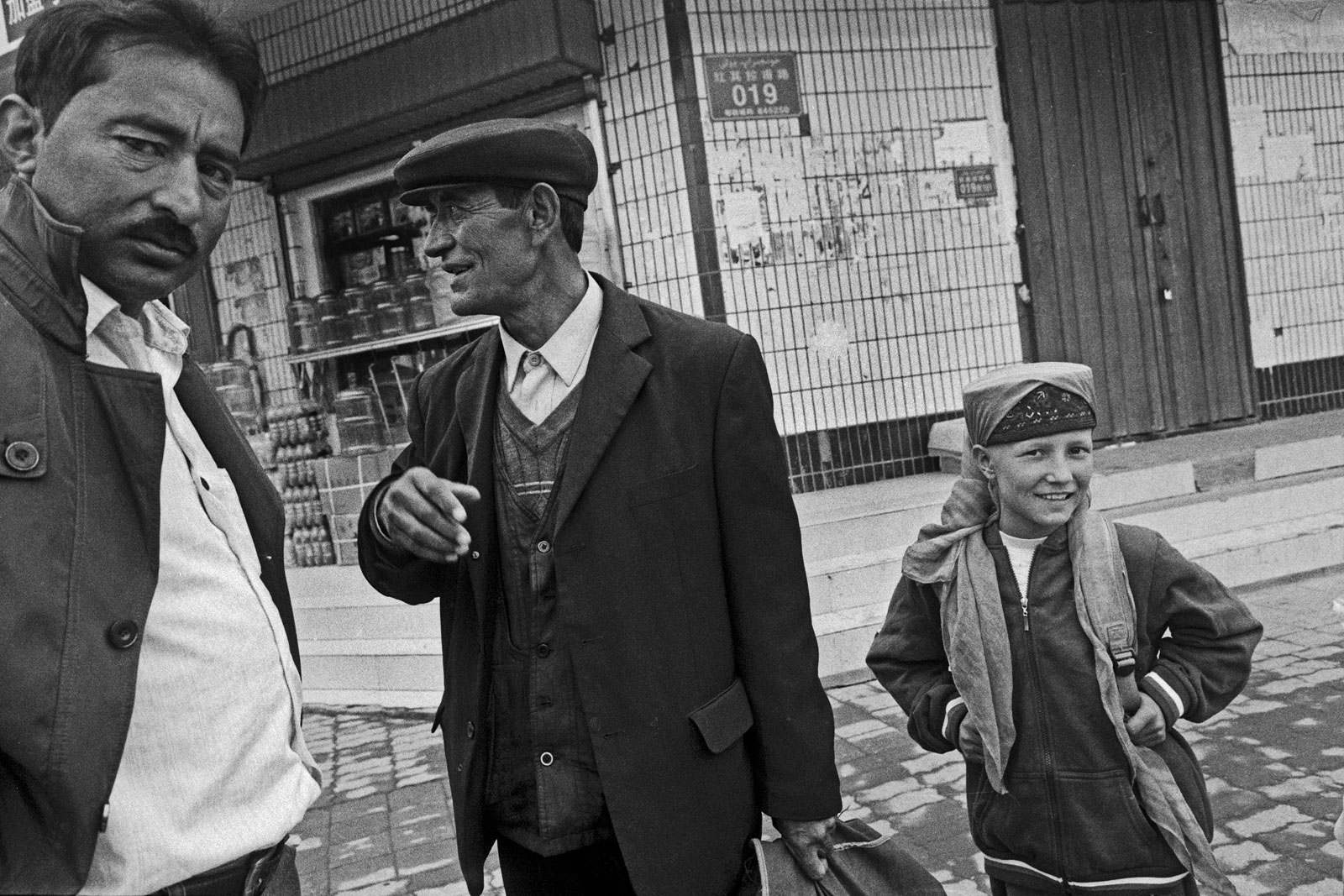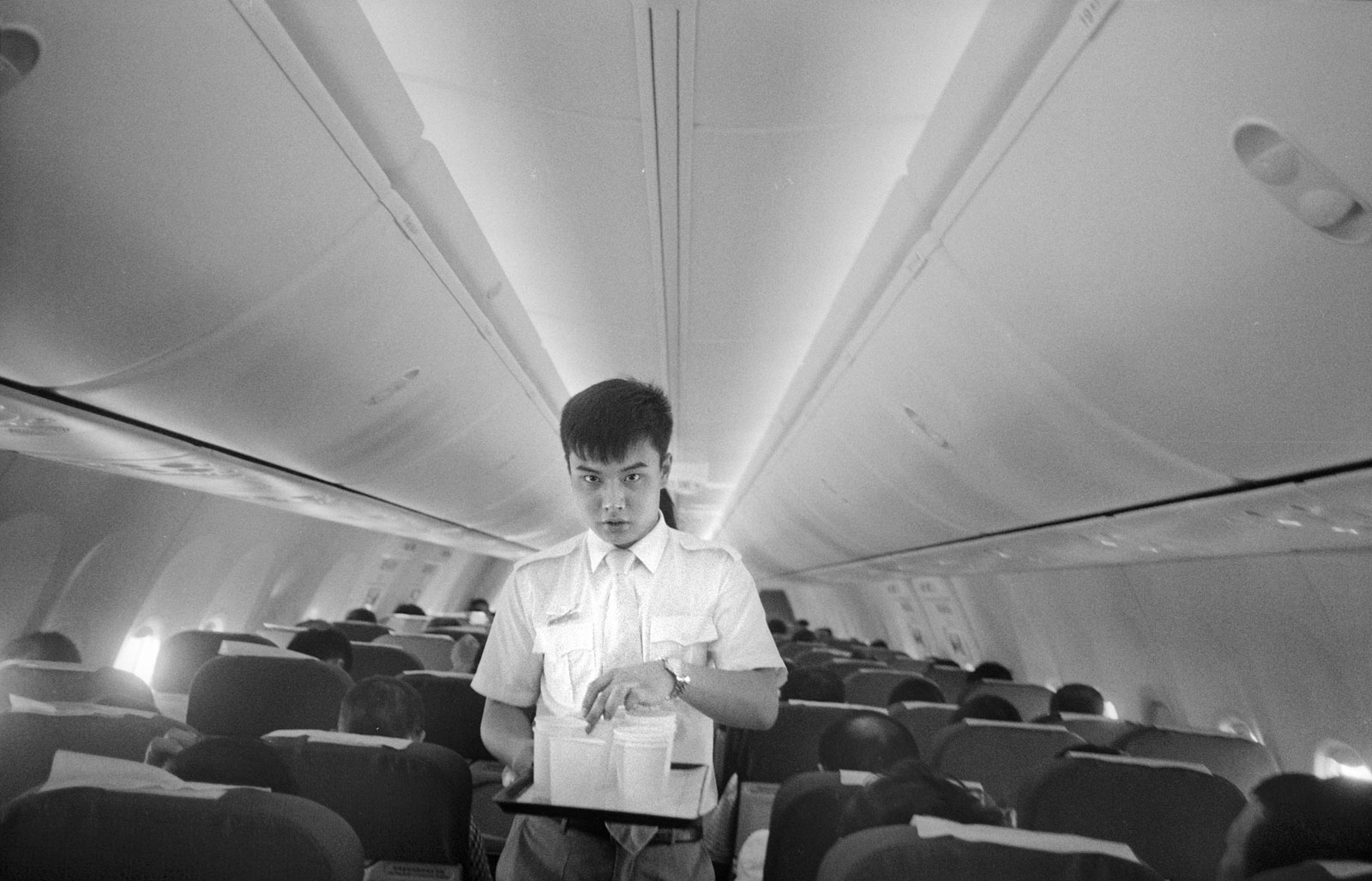Photographs from Xinjiang by Patrick Becker
The Uyghurs in Urumqi and Kashgar proved to be as curious about me as I was of them. Frowns and smiles were often simultaneous. A number of Uyghurs wanted to know if I was an American, and were surprised and pleased to learn that I’m of German origin. I had to notice that their praises were limited to Germanys worst epoch.
In the overcrowded streets of the “Old Town”, a continuing crush of people sweeps over the dusty pavements with an urgency I hadn’t experienced in any other city in China.
Though the government does its best to re-model and conform these Uyghur neighborhoods to Chinese norms, only a few native Han Chinese dare enter them. At the gold lettered gate of the “Old Town”, guided Han Chinese tourist groups wander in the Bazaar’s refurbished halls and passages. There, traders sell skins of lynx and wolves, or of yellow-pelted dogs, which are cleverly painted with patterns of black vertical stripes: the rare “Chinese tiger”.
Though Uyghur security guards are prohibited from carrying arms, heavily armed Han Chinese police and military are on constant patrol, the drab institutional Chinese uniforms in stark contrast to Uyghur traditional dress. The everyday wear of Uyghur women, in particular, features spectacularly colorful decorative costumes and elaborate adornments. Some of the younger Uyghur men can be seen in the long-discontinued fashions of Western department stores.
The last photographs of this series are of Tajiks in their home-town of Tashkurgan, high in the Pamir mountains. Close to the miltarized border zone of Tajikistan and Pakistan, Tashkurgan is a drab little town inhabited by an ethnically distinct people, its streets filled with a small army of undernourished stray dogs.
I photographed in Xinjiang Province for a short time and without editorial direction or ethnographic method. These photographs are a record of scenes, faces and situations which I found interesting.
